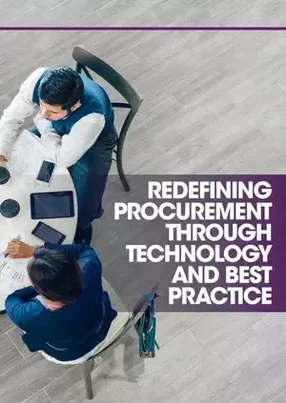Over the past ten years, procurement as an industry sector has radically transformed from its traditional position as an afterthought to a business. More and more businesses are waking up to the notion that procurement has become a far more integral cog in enabling strategic growth and innovation for business and this is something that Hanson recognises and has seen first-hand in her procurement career in South Africa.
“Procurement departments are often called prevention departments, or used to be historically in any case,” she says. “The key to success for us and other companies is to really try to break away from the siloed ways of before and collaborate more to bring procurement into the wider business.”
Hanson will often work with other stakeholders around tenders and purchasing to realise and better identify where procurement can ascertain the best value for money without compromising on the quality of products.
Having worked for the British Military in logistics and supply chain, particularly in direct procurement and local resourcing, before moving to South Africa and working with a number of F&B companies, Hanson has an experienced insight into understanding the nuances of challenging market dynamics. This experience, she feels, gives her the necessary edge required to act fast and respond to the many challenges that building or transforming a procurement function in a huge market like South Africa will bring.
“You have to think on your feet. You have to overcome challenges from unforeseen and last-minute changes and requirements, that you just have to deal with,” she says. “As much as we always want to have a set structure and procedures in place, it doesn't always work that way in the real world. Operational challenges always come in between and you need to address that as quickly as you possibly can in order to succeed and grow.”
A common challenge across the global supply chain and procurement industry is one of vendor management. As the function continues to become more central to business operations and growth, it is often the case that procurement functions have fallen by the wayside and no longer meets the demands of the business, which proves costlier by the second.
With little to no structure, no approved vendor or product lists and an outdated ERP System in place, Hanson recognises the challenge that lay before many people in procurement. The goal then becomes one of streamlining, optimising the entire procurement function and consolidating volumes in order to establish better pricing.
“There were more than three and a half thousand vendors that we had previously worked with,” says Hanson. “After an initial clean up, we narrowed that down to 900 and we are constantly working with that supplier base to improve compliance, realise cost savings and foster more collaborative and effective relationships.”
Over the last few years Hanson can look at a number of key successes across the industry and she feels the most important proof point for any company is the optimisation of those supplier and vendor relationships. “How do we stand out? How do we get people that want to work with us? There has to be a collaboration and a partnership between clients and suppliers, and we as a team have really strived to work towards that.”
“For me, it's proven very successful. I've managed to really optimise our relationships and get some very unique structures and agreements with the suppliers, just by changing the way that we would normally operate.”
“The SAP model that is widely used was the correct model then but not for the industry today,” she says. “Back then it was purely financial but now we are looking at warehousing and distribution and vehicle fleets and a whole array of things that just didn’t work with that older model.”
“With new ERP systems now in place, it's created other opportunities and benefits for business. If we can tap into those and open the business, the pricing will become better, the support will become better, and there will be a more structured flow.”
A transformation of any size, particularly one that involves a complete restructuring of an operating model and technology system, requires the buy-in from the entire business. In order to achieve any form of progress and indeed growth, Hanson notes that businesses have to invest in the biggest resource at their disposal, the people. Hanson is a firm believer in creating a workplace that challenges and empowers its employees to innovate and go above and beyond in order to succeed. She does, however, understand that the business leaders themselves have to do their part in order to enable this.
“I do think we need to invest more in skills development as a profession. We do our best to attend procurement conferences and trade shows to gain insight into how the wider industry is developing a modern-day procurement professional,” she says.
See also:
- Transforming supply chain strategies at Petro Rabigh
- How a procurement transformation helped to mould Ansaldo STS into a transportation leader
- How Ross Video’s procurement transformation was enabled through acquisitions
Ultimately, it’s about empowering the individual and ensuring that each and every person understands their role and how important they are. “There's a lot of other ways to incentivise people. It doesn't always have to be monetary. That reflects on the business because they feel valued, they can see the role that they have and will continue to play is recognised.”
As businesses continue to redefine their procurement functions, Hanson looks at what businesses have achieved to date, but she understands that no transformation can ever truly end and that they must continuously look at their procurement function and identify ways they can improve.
For Hanson, that starts with educating and making the wider business fully realise the true value that procurement can bring.
“I think there is still a lack of understanding as to the full value of the procurement department and what benefits it can bring,” she says. “If we can continue to improve that, through notable successes, and make sure that we’re more than just the fixer of problems then it would represent a great shift within the business. We’re not quite there yet, but if we continue along this path we will get there.”



